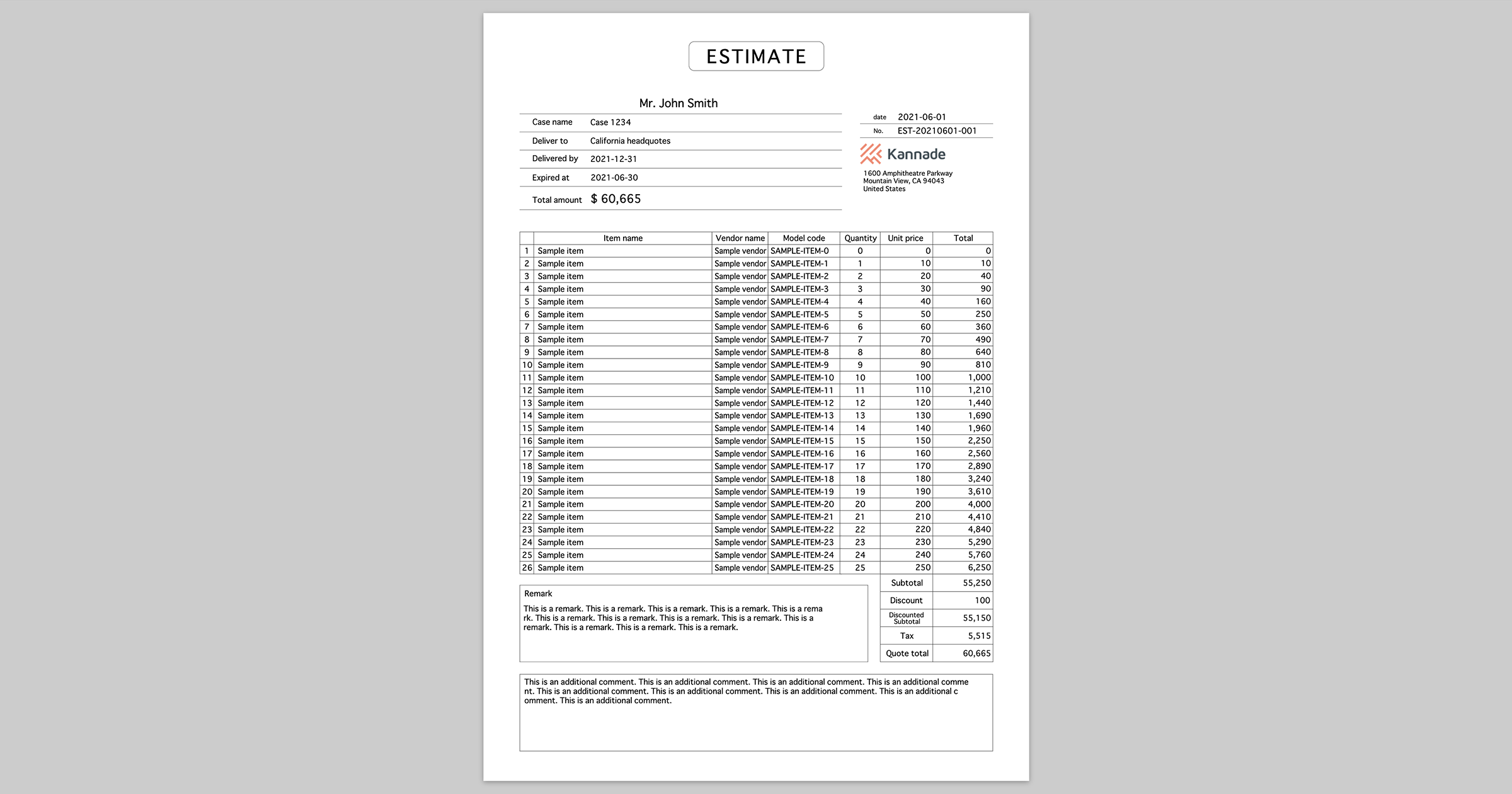svg-paper




The world's most maintainable way to create paper-printable documents 🖨💘

Concepts
You can print beautiful and maintainable paper documents by following steps:
- Design the document with Adobe XD, Figma, or something
- Export it as SVG
- Embed SVG into your HTML and fix it with svg-paper
- That's it 💥
Installation
CDN
<link rel="stylesheet" href="https://cdn.jsdelivr.net/npm/svg-paper@0.0.0/dist/svg-paper.min.css">
<script src="https://cdn.jsdelivr.net/npm/svg-paper@0.0.0/dist/svg-paper.min.js"></script>
npm
$ npm install svg-paper
Preparing SVG template
Using Adobe XD is strongly recommended
If you use Adobe XD, you are lucky because if you put some placeholders in the artboard like %placeholder1% or %serialPlaceholder[0]%, Adobe XD assigns id to <text> elements like _placeholder1_ or _serialPlaceholder_0_ automatically.
From this, you can embed the exported SVG into your HTML without any modification even if you use characters that cannot be used for id, and as a result, you can replace only placeholder as a value without replacing id 🙌
Figma is not very good...
Figma doesn't do these things like Adobe XD. So if you use Figma, you have to replace id for example like as following.
$ sed -E 's/id="%([^%]+)%"/id="_\1_"/' /path/to/exported-from-figma.svg \
| sed -E 's/id="_(.+)\[(.+)\]_"/id="_\1_\2_"/' > /path/to/exported-from-figma.tweaked.svg
This command converts ids to safe format.
And one more thing. With Figma, not using multi-byte characters in your placeholder labels is strongly recommended.
If you use multi-byte characters, Figma converts them into XML character reference when exporting. This is very inconvenient to replace or specify as id.
Basic usage of svg-paper
Anyway, once SVG template is ready, rest is so easy 👍 You can replace or adjust contents easily with svg-paper like following.
import SvgPaper from 'svg-paper'
const paper = new SvgPaper()
paper
.replace('%placeholder1%', 'Actual value 1')
.adjustText('#selector1', 1000)
.adjustText('#selector2', 800, 'middle')
.adjustText('#selector3', 800, 'end')
.adjustTetxarea('#selector4', 600, 300)
.adjustTextarea('#selector5',
600,
300,
1.2,
0.5,
0.5,
false
)
.apply()
To beautify preview screen, you only have to add 3 lines to your html 👍
<head>
...
<link rel="stylesheet" href="svg-paper.min.css">
<style>@page { size: A4 }</style>
</head>
<body class="A4">
<svg>...</svg>
</body>
First load svg-paper.min.css (or svg-paper.css). After that in <head> set @page size and set the class of <body> to specify page size.
Available page sizes are:
A3 A3 landscapeA4 A4 landscapeA5 A5 landscapeletter letter landscapelegal legal landscape
Learn more
Please see test code to learn more 👌
You also can see the live demo on your local by following steps:
git clone this reponpm installnpm run test js/tests/functional.test.js- open
js/tests/output/real-world-paper-xd.html or js/tests/output/real-world-paper-figma.html in your browser
Tips: Hiding content before placeholders are replaced
svg-paper replaces placeholders and adjust text/textarea after DOM loaded, so the content before replaced and adjusted will be shown on the screen for a moment 🤔
This problem is very easy to solve just by adding some "blinder" layer on the content and hide it after .apply() 👍
<body>
<div id="blinder" style="width:100vw; height:100vh; background-color:#ccc"></div>
<svg>...</svg>
</body>
paper.apply()
document.querySelector('#blinder').style.display = 'none'
With non Node.js back-end
If your back-end isn't Node.js, you can use svg-paper by passing replacements and text/textarea adjustment parameters to front-end as JSON string.
e.g. PHP and Twig
public function paper(YourModel $model, YourPaperDefinition $paper)
{
return $this->render('paper.html.twig', [
'svg' => $paper->getSvg(),
'replacements' => $paper->getReplacements($model),
'textAdjustments' => $paper->getTextAdjustments(),
'textAreaAdjustments' => $paper->getTextAreaAdjustments(),
]);
}
class YourPaperDefinition
{
public function getSvg()
{
return file_get_contents('/path/to/paper.svg');
}
public function getReplacements(YourModel $model): array
{
return [
'%placeholder1%' => 'Actual value 1',
];
}
public function getTextAdjustments(): array
{
return [
'#selector1' => [1000],
'#selector2' => [800, 'middle'],
'#selector3' => [800, 'end'],
];
}
public function getTextareaAdjustments(): array
{
return [
'#selector2' => [600, 300],
];
}
}
{# paper.html.twig #}
<!DOCTYPE html>
<html>
<head>
<meta charset="utf-8">
<meta http-equiv="X-UA-Compatible" content="IE=edge">
<meta name="viewport" content="width=device-width, initial-scale=1, user-scalable=1">
<title>Paper</title>
<link rel="stylesheet" href="svg-paper.min.css">
<style>@page { size: A4 }</style>
</head>
<body class="A4">
{{ svg|raw }}
<div data-replacements="{{ replacements|json_encode }}"></div>
<div data-text-adjustments="{{ textAdjustments|json_encode }}"></div>
<div data-textarea-adjustments="{{ textAdjustments|json_encode }}"></div>
<script src="svg-paper.min.js"></script>
<script src="your-script.js"></script>
</body>
</html>
const replacements = $('[data-replacements]').data('replacements')
const textAdjustments = $('[data-adjustments]').data('text-adjustments')
const textareaAdjustments = $('[data-adjustments]').data('textarea-adjustments')
const paper = new SvgPaper()
for (let [search, replacement] of Object.entries(replacements)) {
paper.replace(search, replacement)
}
for (let [selector, args] of Object.entries(textAdjustments)) {
paper.adjustText(selector, ...args)
}
for (let [selector, args] of Object.entries(textareaAdjustments)) {
paper.adjustTextarea(selector, ...args)
}
paper.apply()
PDF Generation
You can easily print to PDF by using electron-pdf.
$ npm install --global electron-pdf
$ electron-pdf your-document.html your-document.pdf







